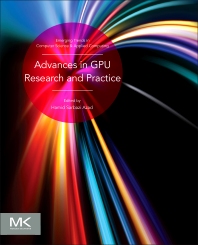Books in Computer science
Books in Computer science
The Computing collection presents a range of foundational and applied content across computer and data science, including fields such as Artificial Intelligence; Computational Modelling; Computer Networks, Computer Organization & Architecture, Computer Vision & Pattern Recognition, Data Management; Embedded Systems & Computer Engineering; HCI/User Interface Design; Information Security; Machine Learning; Network Security; Software Engineering.
- 4th Edition
- September 12, 2016
- Marilyn Wolf
- English
- Paperback9 7 8 0 1 2 8 0 5 3 8 7 4
- eBook9 7 8 0 1 2 8 1 0 3 9 3 7

Computers as Components
- 1st Edition
- September 9, 2016
- Eric C Jones + 1 more
- English
- Paperback9 7 8 0 1 2 8 0 5 1 9 6 2
- eBook9 7 8 0 1 2 8 0 5 2 8 3 9

Social Network Analysis of Disaster Response, Recovery, and Adaptation
- 2nd Edition
- September 8, 2016
- Fred A. Cummins
- English
- Paperback9 7 8 0 1 2 8 0 5 1 6 0 3
- eBook9 7 8 0 1 2 8 0 5 2 9 2 1

Building the Agile Enterprise
- 1st Edition
- September 8, 2016
- Nihad Ahmad Hassan + 1 more
- English
- Paperback9 7 8 0 1 2 8 0 4 4 4 9 0
- eBook9 7 8 0 1 2 8 0 4 4 9 6 4

Data Hiding Techniques in Windows OS
- 1st Edition
- September 6, 2016
- Hamid Sarbazi-Azad
- English
- Paperback9 7 8 0 1 2 8 0 3 7 3 8 6
- eBook9 7 8 0 1 2 8 0 3 7 8 8 1

Advances in GPU Research and Practice
- 3rd Edition
- September 3, 2016
- Joshua Feldman + 2 more
- English
- Paperback9 7 8 0 1 2 8 1 1 2 4 8 9
- eBook9 7 8 0 1 2 8 1 1 3 7 7 6

Eleventh Hour CISSP®
- 2nd Edition
- September 3, 2016
- Jason Andress + 1 more
- English
- Paperback9 7 8 0 1 2 8 0 5 4 7 2 7
- eBook9 7 8 0 1 2 8 0 5 4 7 3 4

Coding for Penetration Testers
- 1st Edition
- September 1, 2016
- Anand Paul + 3 more
- English
- Paperback9 7 8 0 1 2 8 0 9 2 6 6 8
- eBook9 7 8 0 1 2 8 0 9 5 4 6 1

Intelligent Vehicular Networks and Communications
- 6th Edition
- September 1, 2016
- Daniel T. Valentine + 1 more
- English
- eBook9 7 8 0 1 2 8 0 5 2 7 1 6

Essential MATLAB for Engineers and Scientists
- 1st Edition
- Volume 228
- August 27, 2016
- English
- Hardback9 7 8 0 1 2 8 0 4 2 1 6 8
- eBook9 7 8 0 1 2 8 0 9 2 6 2 0

Brain-Computer Interfaces: Lab Experiments to Real-World Applications